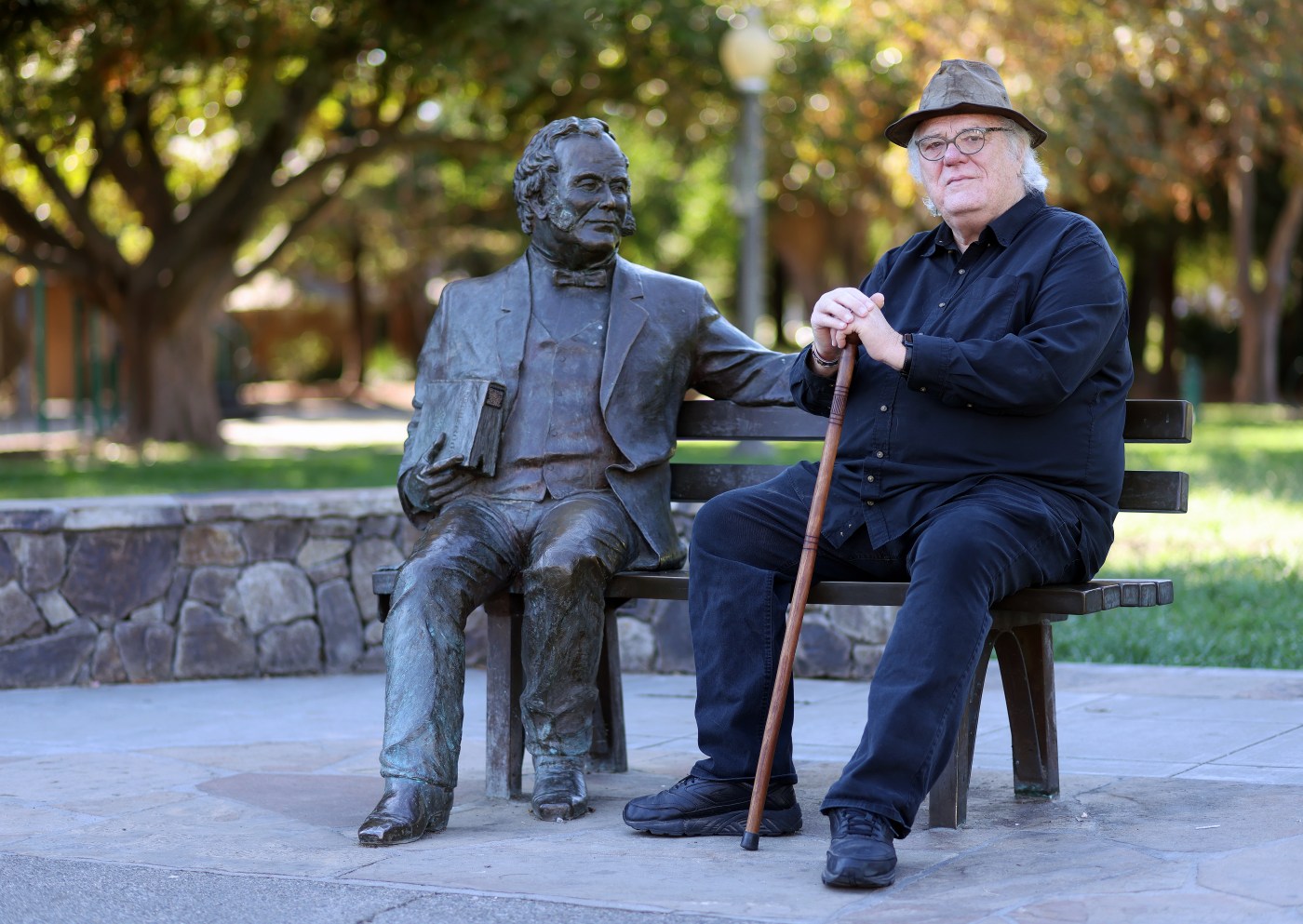On a sunny morning in late September, Breck Parkman, a retired archaeologist with the California State Parks, reflected on his extensive career while seated at a picnic table in the historic Sonoma Plaza. This location, across from the city’s 1823 mission, served as a backdrop for Parkman’s 36 years of uncovering narratives from the past, reaching back tens of thousands of years.
At 73, Parkman continues to embrace his role not just as a scientist, but as a storyteller. His work involves piecing together historical accounts through artifacts, soil chemistry, and the physical remnants of ancient life. He described how the plaza once lacked the trees and grass present today, surrounded instead by a landscape rich with history and the echoes of life long gone.
A Glimpse into the Past
Parkman’s imagination takes him back to when General Mariano Vallejo established the plaza in 1835. He recalls how the area served as a parade ground for Vallejo’s soldiers, envisioning a time when mammoths and saber-toothed cats roamed the Bay Area. “You can see San Francisco Bay from here,” he noted, emphasizing the connection between the past and present.
His fascination with the Ice Age Columbian mammoths that inhabited the region has been a major focus. Although he retired in 2017, Parkman remains active, sharing his insights through writing, lectures, and YouTube videos that reflect his lifelong dedication to archaeology.
Parkman’s work has taken him worldwide, from the Canadian Plains to the Australian Outback. He has played a crucial role in significant archaeological projects, including the recovery of mummified remains in Peru that had been disturbed by looters. Yet, his passion for archaeology is equally matched by his discoveries closer to home.
Uncovering Local Narratives
Since joining the state parks in 1981, Parkman has managed cultural resources across over 70 parks in Northern California. His investigations have explored early Paleo-Indian migration, the history of Fort Ross State Historic Park, and the unique stories of soldiers stationed at Angel Island. One of his most notable projects involved the remains of the Burdell mansion at Olompali State Historic Park, which was central to a famous 1960s counterculture commune.
Parkman detailed how this commune, loosely affiliated with the Grateful Dead, sought to create a new way of living. However, their ideals crumbled when outsiders moved in, culminating in the mansion’s destruction by fire in 1969. His research into the vinyl records found in the ruins revealed a diverse musical taste that defied stereotypes of commune life.
Reflecting on his childhood in Georgia, where he discovered Native American artifacts, Parkman’s interest in archaeology was sparked early on. His experiences during the civil rights movement and encounters with iconic figures like Martin Luther King Jr. and John F. Kennedy shaped his commitment to understanding history and community.
Parkman initially contemplated a medical career but ultimately pursued archaeology in the Bay Area, earning both his bachelor’s and master’s degrees at what is now Cal State East Bay. His early work emphasized the importance of environmental preservation, which resonates with his belief that studying past cultures informs our understanding of the present and future.
Personal Reflections and Ongoing Projects
Among his proudest achievements is the discovery of peculiar shiny patches on rocks along the Sonoma Coast, which he theorizes were created by Columbian mammoths engaging in self-grooming. This significant finding occurred on September 12, 2001, a day marked by the aftermath of the 9/11 terrorist attacks, providing Parkman with a poignant perspective on life’s fragility.
Parkman’s personal projects also reflect his life experiences. He has created a YouTube tribute to his wife, Diane Askew, who passed away in December 2021. His reflections on grief and the human experience resonate deeply, as he connects stories of the past with the present.
As he continues to explore the complex narratives embedded in the landscapes of the Bay Area, Parkman remains dedicated to uncovering the hidden histories of those who came before us. His journey as a storyteller and archaeologist emphasizes the importance of understanding our shared past, its impact on our lives today, and the legacy we leave for future generations.
